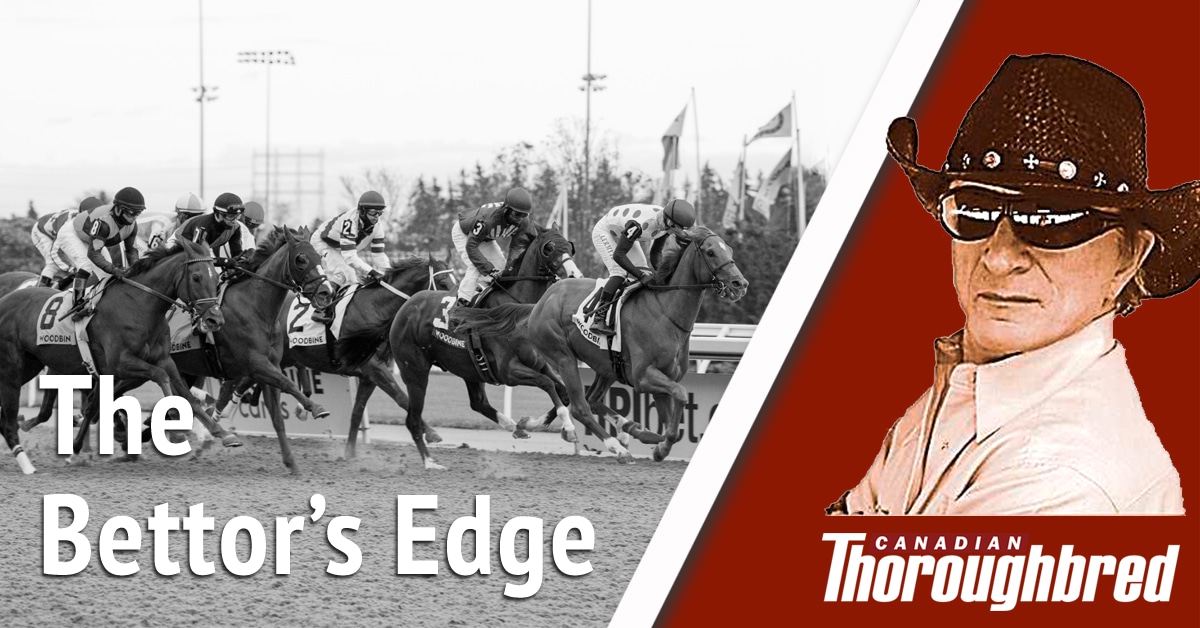Deconstructing the “drool” payoff for a superfecta yesterday at Woodbine is fun (and certainly instructive) but looking forward to this Saturday is even more fun because, of course, Saturday is Kentucky Derby Day, a day in which betting pools at all tracks will be fattened considerably by dumb, uh, uninformed money.
A whole book was written on the subject (Cashing Big on Racing’s Biggest Days) and speed guru Andy Beyer gets us licking our chops by telling us he scored his biggest exactor payoff ever on Kentucky Derby Day when his $1,000 bet on an exactor that paid $200 netted him $100,000. Will that be big bills, sir? Do you think he was silently thanking the great unwashed for betting the “wrong” combination so he could feed from a much bigger treasure trough?
So how big do pools get? In last year’s Kentucky Derby, $70 million was bet in the win/place/show pool, $22 million in the exactor pool, $31 million in the triactor pool and more than $9 million in the superfecta pool. But other tracks such as Woodbine, Century Mile and Hastings in Canada will also see their pools expand. Will you emerge from Derby Day with a life-changing score?
How to capitalize on the Derby? First comes a decision on whether you think a speedball will wire the field (a la Justify in 2018) or whether speed will collapse and a malingerer at the back of the pack will mow them all down in the 1 ¼-mile test (a la 50-1 Mine That Bird in 2006). Floating on the internet is a recommendation you calculate the closing fractions of horses who have raced 1 1/8-miles and bet the best closers.
To me, the “now” horse is the colt from Japan because Japanese horses have been cleaning up everywhere this year: look at all the races they won on Saudi Cup Day and Dubai World Cup Day. Their intensive training methods are now receiving widespread attention, as they should. Their horse is Crown Pride. Whatever your choice, good luck, and best wishes on taking advantage of all that money floating out there at your favourite track(s).
***
Now let’s look at the drool payoff of the weekend, the $6,496 superfecta for a mere 20 cents in race 4 Sunday at Woodbine. On the face of it, it appeared to have the making of a tricky race because it was the dreaded, often-chaotic “non-winners of two races” condition. But the winner turned out to be as straightforward as they come: the leading jockey, Kazushi Kimura, partnered with the horse of the leading trainer, Mark Casse, to win with #9 Upstart Gentleman at odds of 7-2. And, I can hear you asking, the superfecta paid that much? Yes.
A favourite angle I have of distilling a seemingly hodgepodge group of horses is to calculate the number of in-the-money finishes for each horse. The top in-the-money horses in the 12-horse field were #4 (three races for five in the money), #6 (one for two), #8 (one for one), #10 (eight for 15), #11 (seven for 12) and #12 (two for four). The race result was 9-4-6-11. In other words, wheeling the top jock/trainer horse #9 on top of six horses at a cost of $24 for 20-cent wheels would have netted you …….. Do I have to say it? If your jaw is hanging open, I don’t blame you. In-the-money finishes is my main mode of attack in stakes races. See the program page for race 4 here.
And what about the $137.90 winner of race 9 yesterday, Seventyseven Stone, you ask? “I nearly barfed when he won,” said the editor of this fine publication, who loves the longshots. “Nothing jumped out at me in his past races, works, breeding. He was the oldest horse in the field by far ‒ so what did I miss?” What you have experienced, dear editor, is what can happen in the most chaotic race condition, non-winners of two races lifetime. (As noted in the superfecta race above.) There is simply no rhyme nor reason to some of those wins; in group play I simply advocate taking “all” horses in that leg of pick-4, pick-5 and pick-6 tickets. The most consistent horses in that kind of race are usually the horses that come trudging late to finish third or fourth ‒ which can be added to the bottom of exotic wheel plays with “all” horses at the top.


